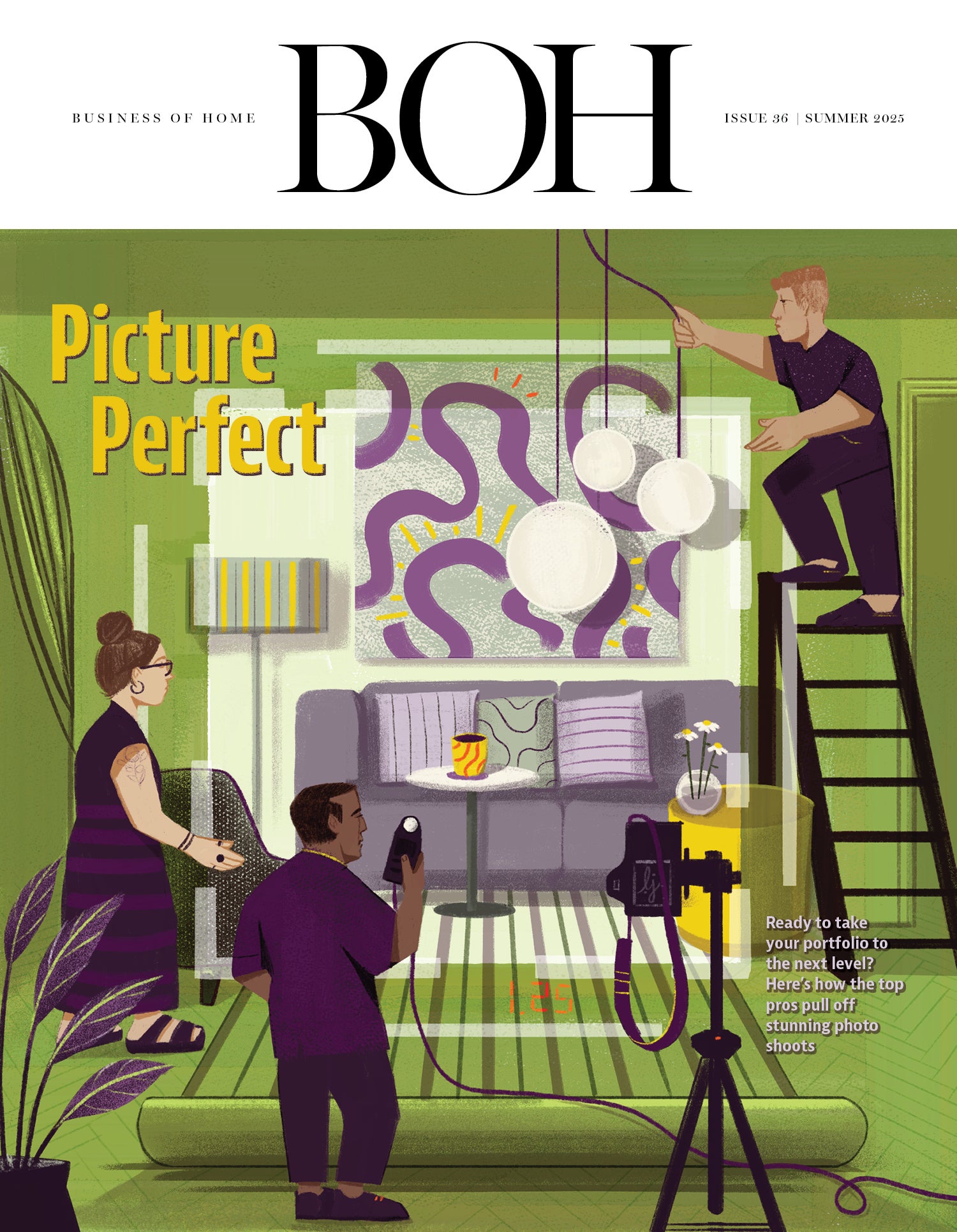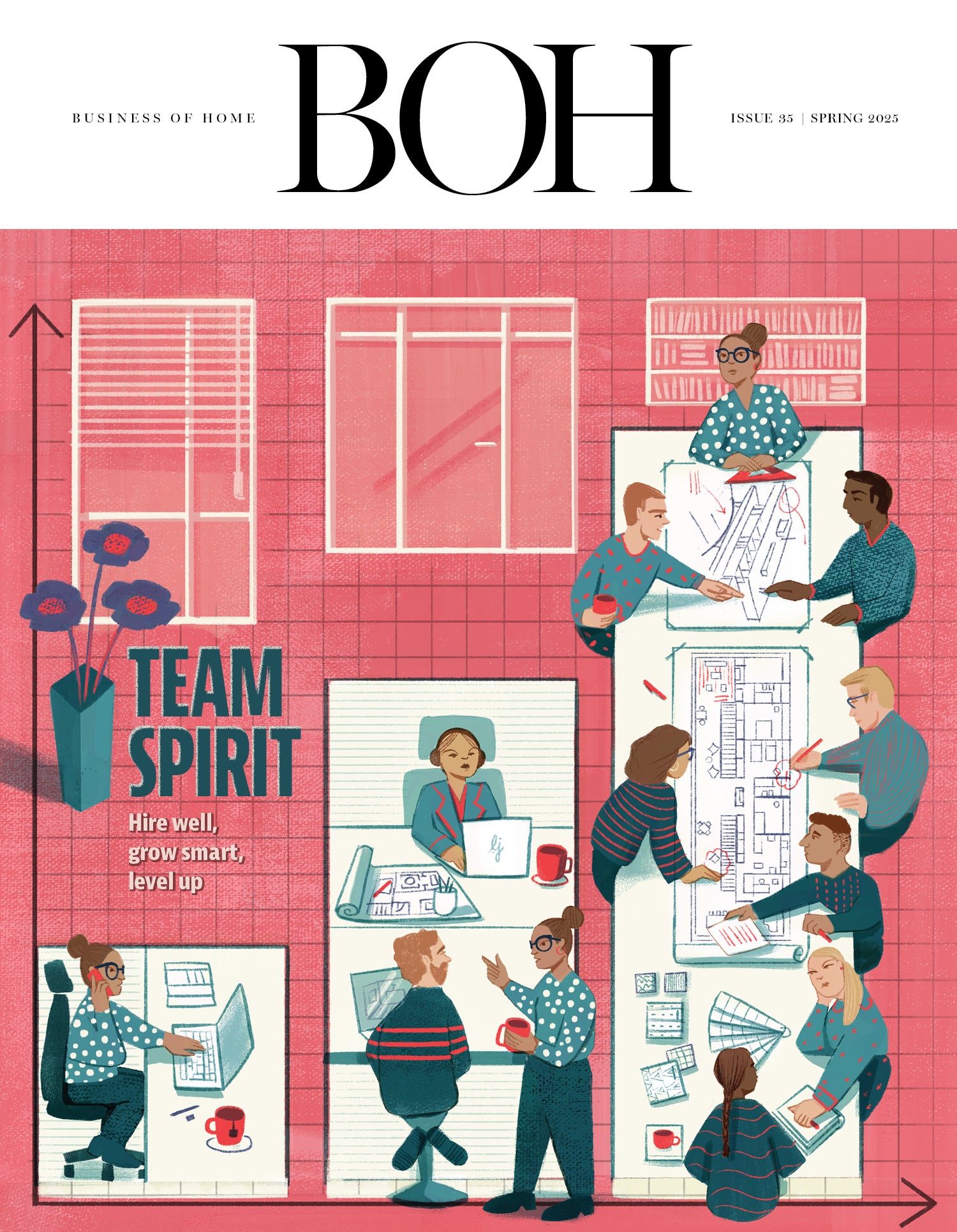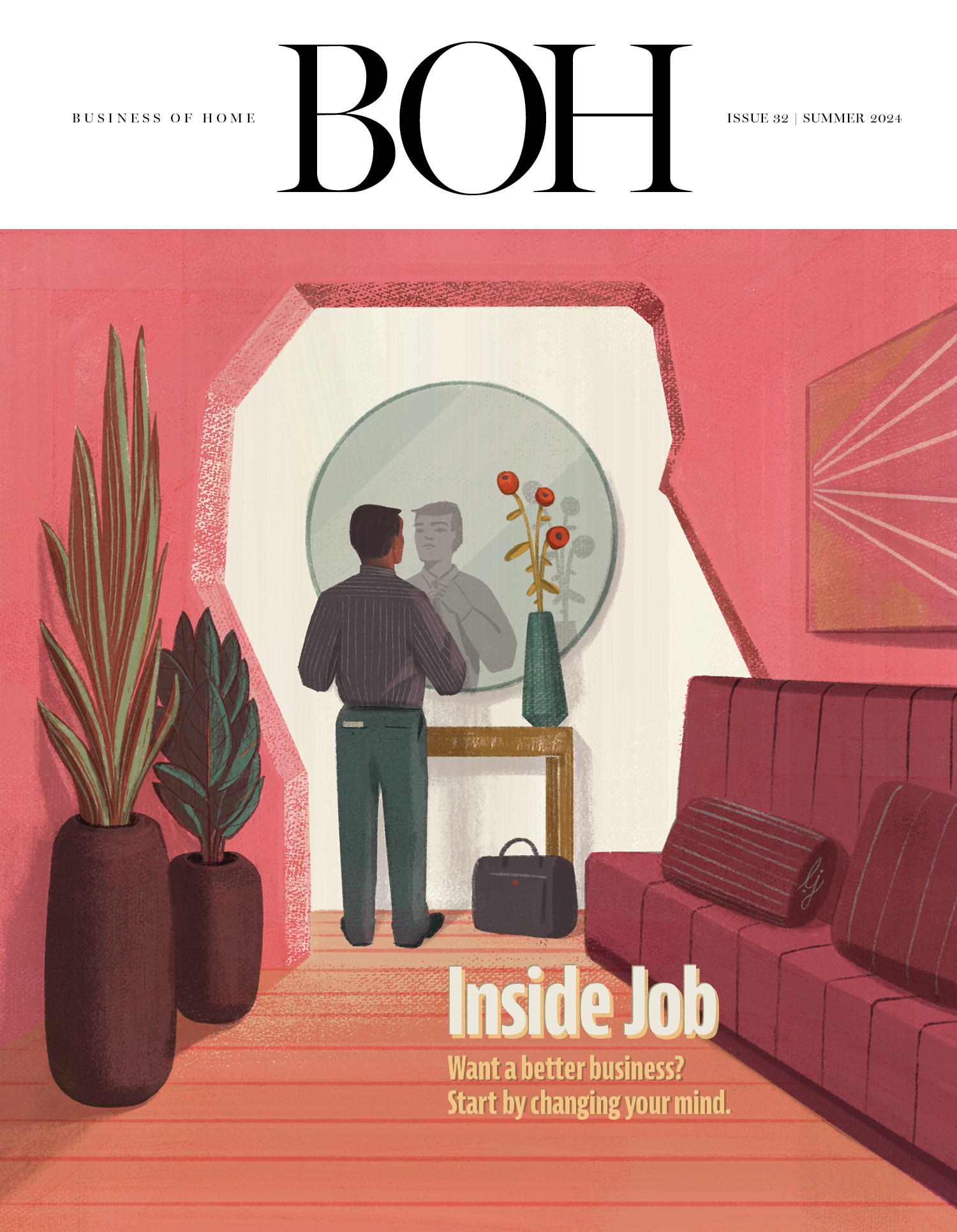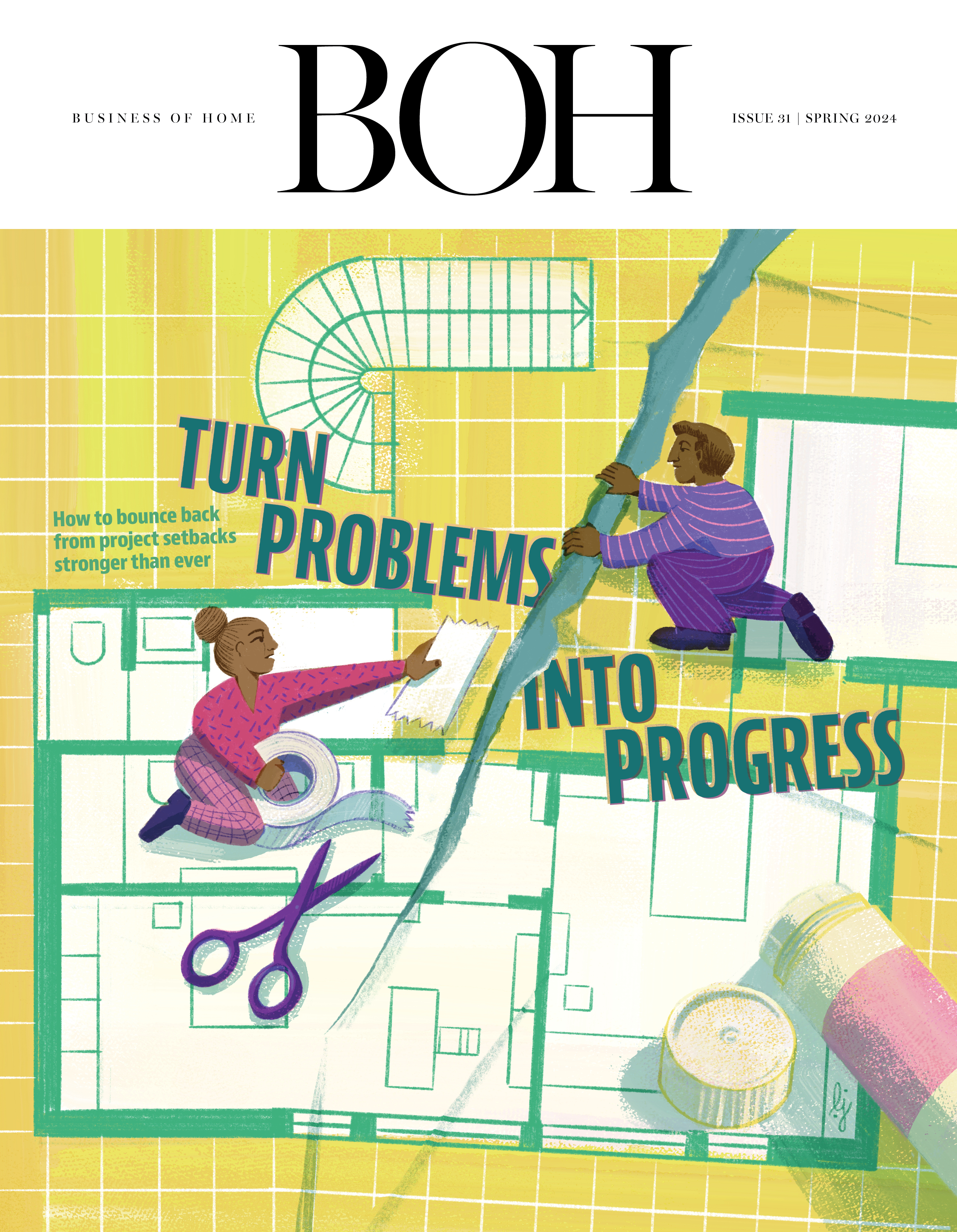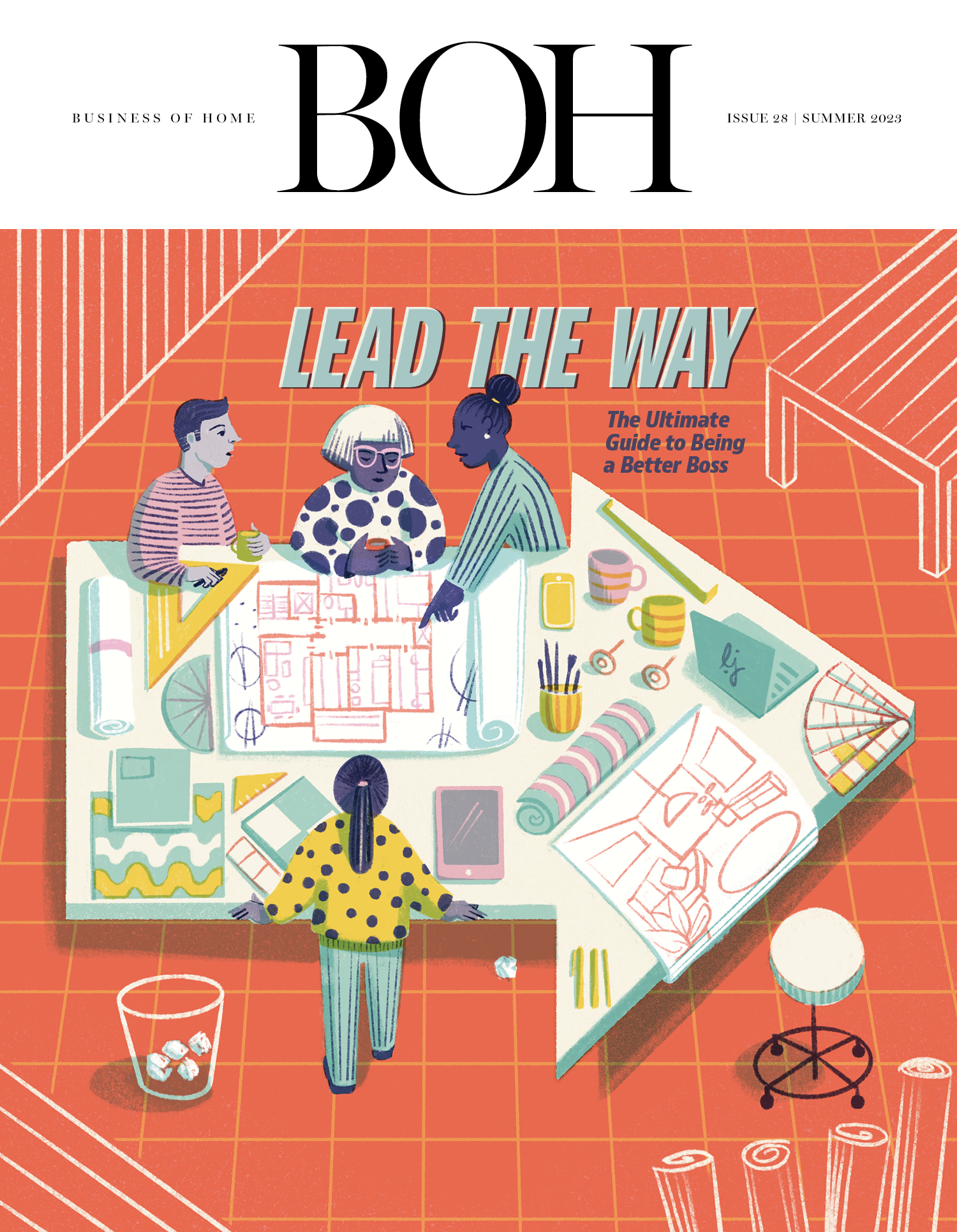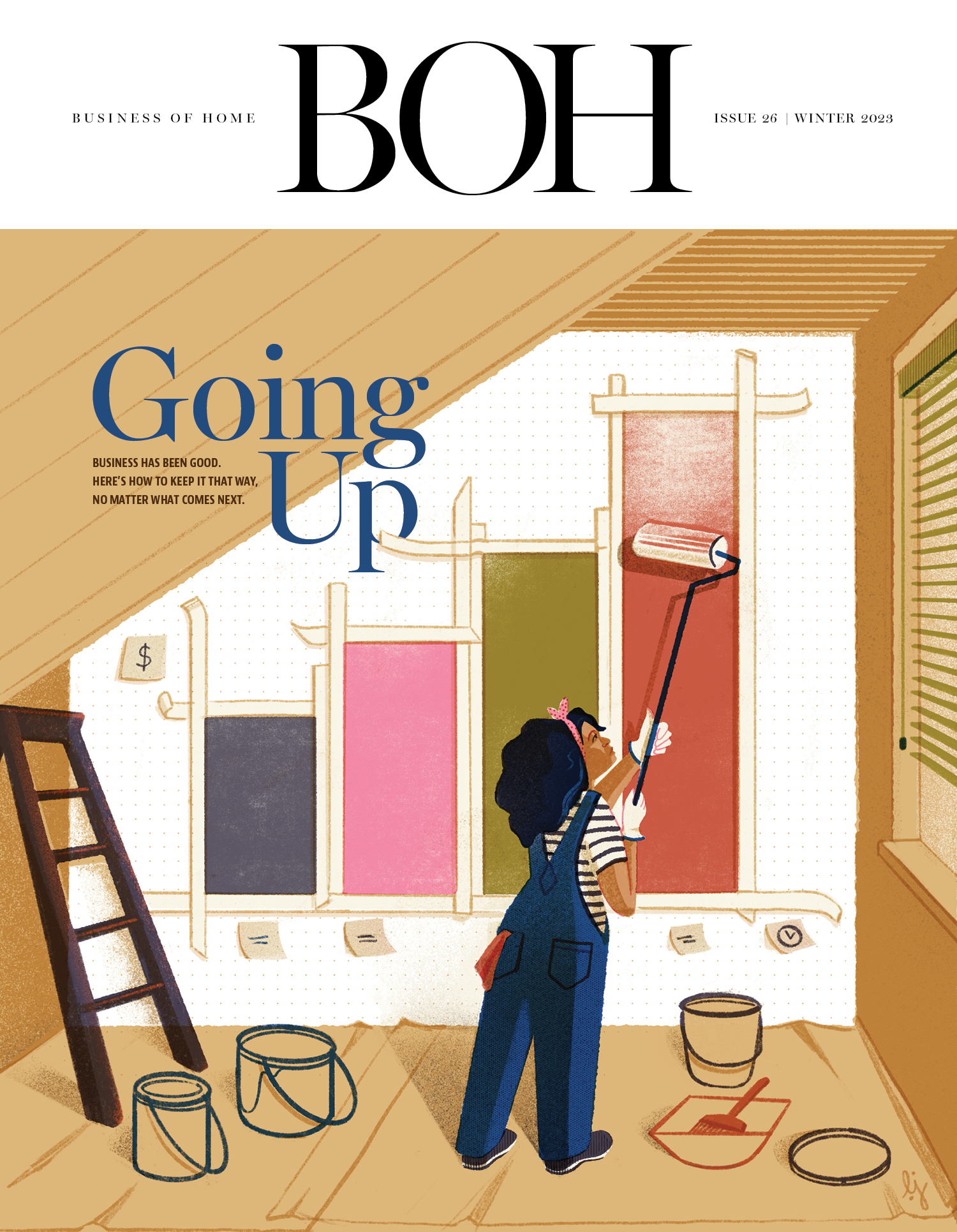In 2010, Rosina Kastelitz and Erica Hash, the founders of Billings, Montana–based design firm and retail store Kibler & Kirch, were looking to sell their business. Enter Jeremiah Young, a longtime fan of the company. “I just happened to have a conversation with them at the time about how there had to be someone who could buy this business,” Young told Business of Home in 2024. “Pretty soon, I realized it was going to be me.” Young purchased the brand and its remaining inventory; 15 years later, his firm takes on projects across the area and recently opened a brand-new location. While he’s happy with where the business is now, taking over a firm has its pros and cons as a buyer. The same is true for the seller—and while Kastelitz and Hash were able to profitably exit from the business they founded, most design companies aren’t as lucky. Without a proper succession plan, things can go wrong very quickly.
Last week, the American Society of Interior Designers unveiled a research report on this exact topic with the hope of supporting firms with principals close to retirement. The study, “Designing A Succession Plan: Insights for Firm Owners,” was conducted in partnership with Greenway Group—a consulting firm that specializes in the design and construction industry—and highlights the important role a succession plan plays in ensuring continuity in both a firm’s business and culture. The survey identified two key factors that determine a firm’s success: the challenges and emotions owners face when considering stepping down, and the complexity of the succession process with so many ways to go about it. “Interior designers today are not just creative professionals—they are entrepreneurs who have expanded their businesses to include retail, branding, event planning and more, making them uniquely positioned to think strategically about securing their firms’ futures,” says Lindsey Koren, the director of communications for ASID, in the report’s forward.
The study examined the inner workings of 63 architecture and design firms, all with fewer than 40 people. It found a vast disparity based on company size: 30 percent of mid-size firms (25 to 40 employees), 12 percent of small firms (2 to 10 employees) and less than 5 percent of sole proprietors have a succession plan in place at all.
The discrepancy between larger firms and smaller firms has a simple explanation: Smaller firms have a more limited talent pool to choose from, and access to fewer resources like external consultants and training that aid in the process. This, coupled with the trend of younger generations prioritizing work-life balance over traditional career advancement paths, further increases the gap, with fewer candidates going after leadership roles that offer the potential to become a successor.
The report highlights the various exit strategies for firm owners, including mergers, asset sales (like the story of Jeremiah Young) and internal ownership transitions. It also outlines six factors that need to take place for a seamless transition: mission and value continuity; knowledge transfer; ongoing strategic client and industry relationships; decision-making authority and gradual delegation; business management; and a smooth owner transition. The main takeaway? It’s never too early to start thinking about succession.
Conversations about succession have been happening in other corners of the industry as well. In a pair of conversations on the Creative Genius Podcast in 2024, business coach and Pearl Collective founder Gail Doby interviewed financial advisor Marty Fahncke about adopting a mindset of always being ready to sell your business, and William Lieberman, founder and managing partner of boutique financial and human resources services firm The CEO’s Right Hand, about how to measure a firm’s value (and likely sale price), then develop a realistic long-term succession plan.
The Design Leadership Network has also made succession a cornerstone of its recent programming. “When I joined the DLN three years ago, I found that the founding generation of members who were largely baby boomers or on the older side of Generation X were as a cohort really beginning to think about succession,” says Michael Diaz-Griffith, the organization’s executive director and CEO. “Immediately, the things they’re thinking about became a priority for me. But at the same time, I was also implementing a next-generation strategy for bringing in younger members for the sustainability of the organization—and in many cases, I was noticing that the first batches of young members to join us were younger partners of our founding members. I was seeing from the get-go an aspect of succession expressing itself in our membership composition.”
In response, the organization has released a series of papers and presentations about the topic sourced from businesses that have successfully implemented a succession plan, like Ankie Barnes of BarnesVanze Architects, Andrew Cogar of Historical Concepts, and Mark Ferguson of Ferguson & Shamamian Architects. Just last week, the DLN released a master class video with Bunny Williams and Elizabeth Lawrence of Williams Lawrence in which they detail their succession journey and the steps they took to get there. “Suddenness is the enemy of a good succession plan. [It’s] always about steadiness,” says Diaz-Griffith. “A good succession plan secures the legacy of the firm. It provides ongoing income for the senior partner who’s put their blood, sweat, tears and lifetime into building a firm. It also creates opportunities for younger people who don’t have to start from scratch but can build on a legacy and create their own legacy through that institution.”
Having an understanding of succession isn’t just for those eyeing imminent retirement. Being well-versed in the concept and what could take place down the line is worthwhile, especially if you foresee yourself at the helm of someone else’s firm one day or eventually plan on giving up your place at the top. “In a lot of ways, the turnover rate has been rather slow because people are living longer lives. They’re healthier for longer. They’re working longer. It’s the same across the entire economy,” says Diaz-Griffith. “We’ve really been focused on what retirement looks like for that baby boomer set. But now that things are speeding up a bit and we’re seeing change happen, what is it like to be a successor?”




